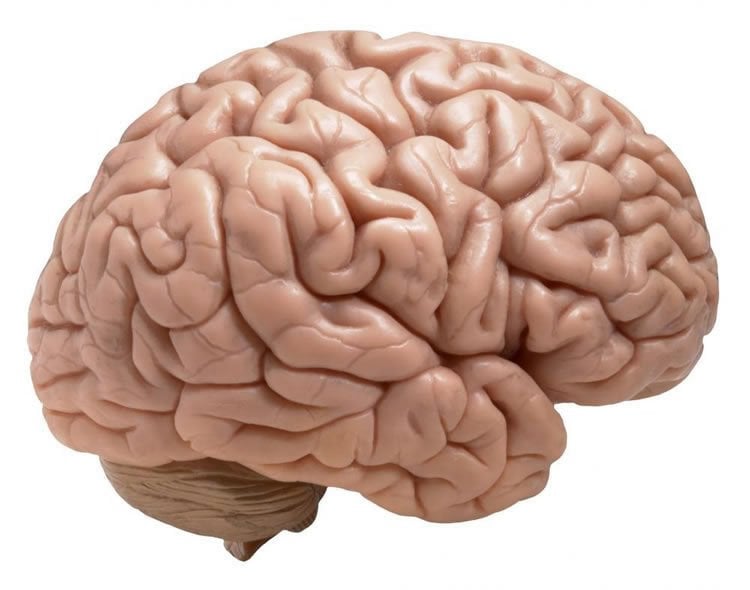Summary: Researchers map the neural activation that occurs during the delay between sensation and action.
Source: UCSB.
A neuroscientist maps brain cell activity that occurs during the delay between sensation and action.
A UC Santa Barbara researcher studying how the brain uses perception of the environment to guide action has a new understanding of the neural circuits responsible for transforming sensation into movement.
“Mapping perception to a future action seems simple,” UCSB neuroscientist Michael Goard. “We do it all the time when we see a traffic light and use that information to guide our later motor action. However, how these associations are mapped across time in the brain is not well understood.”
In a new paper, published in the journal eLife, Goard and colleagues at the Massachusetts Institute of Technology make progress in mapping brain activity in mice during simple but fundamental cognitive tasks. Although a mouse’s brain is much smaller than a human’s, remarkable structural similarities exist. The mouse brain is composed of about 75 million nerve cells or neurons, which are wired together in complex networks that unerlie sophisticated behaviors.
The researchers used large-scale calcium imaging to measure the responses of individual neurons in multiple areas of the brain while mice performed a delayed response task. First, they trained mice to respond to visual stimuli — drifting bars — by either licking or withholding licking, depending on whether the bars moved vertically or horizontally. While the mice performed the task, the investigators recorded neural activity from multiple brain regions thought to be involved — including visual, parietal and frontal motor cortices.
Using a powerful laser-scanning microscope, the team was able to detect the signals from calcium indicators expressed in the neurons well below the brain’s surface. Neurons normally have very low concentrations of intracellular calcium, but when they become active, calcium levels rise, increasing the fluorescence of the indicator and enabling measurement of neuron activity. In this way, the scientists were able to see which neurons were active while the mice performed the delayed response task.
“As expected, we found many neurons that responded only during the visual stimulus or the licking action, but we also found a lot of neurons that responded during other parts of the task,” said Goard, an assistant professor in UCSB’s Department of Psychological & Brain Sciences and Department of Molecular, Cellular and Developmental Biology. “In the frontal motor cortex, we found quite a few neurons that were active during the delay period between the visual stimulus and motor response. This led us to several new interpretations of the role that different brain regions were playing during performance of the task.”

Based on the neural activity in the different brain areas, Goard and his team then used optogenetics — a method of manipulating the nerve cells with light — to inactivate neurons in a temporally precise manner to identify those that function during different parts of the task. This allowed them to figure out which areas were necessary for performing the task. For example, the team determined that the visual and parietal areas are involved in perceiving the stimulus and transforming that into a motor plan, but only the frontal motor cortex is necessary for maintaining the motor plan over the delay period.
“Using this general approach, we hope to map the essential regions for different types of cognitive tasks,” Goard explained. “We are particularly interested in how mice maintain specific types of memories across distributed brain regions.”
Source: Julie Cohen – UCSB
Image Source: This NeuroscienceNews.com image is credited to Neil Hammerschlag, Ph.D. Graphics: UCSB Miller School of Medicine.
Original Research: Full open access research for “Distinct roles of visual, parietal, and frontal motor cortices in memory-guided sensorimotor decisions” by Michael J Goard, Gerald N Pho, Jonathan Woodson, and Mriganka Sur in eLife. Published online August 4 2016 doi:10.7554/eLife.13764
[cbtabs][cbtab title=”MLA”]UCSB. “Linking Perception to Action.” NeuroscienceNews. NeuroscienceNews, 8 September 2016.
<https://neurosciencenews.com/perception-action-neuroscience-4996/>.[/cbtab][cbtab title=”APA”]UCSB. (2016, September 8). Linking Perception to Action. NeuroscienceNews. Retrieved September 8, 2016 from https://neurosciencenews.com/perception-action-neuroscience-4996/[/cbtab][cbtab title=”Chicago”]UCSB. “Linking Perception to Action.” https://neurosciencenews.com/perception-action-neuroscience-4996/ (accessed September 8, 2016).[/cbtab][/cbtabs]
Abstract
Distinct roles of visual, parietal, and frontal motor cortices in memory-guided sensorimotor decisions
Mapping specific sensory features to future motor actions is a crucial capability of mammalian nervous systems. We investigated the role of visual (V1), posterior parietal (PPC), and frontal motor (fMC) cortices for sensorimotor mapping in mice during performance of a memory-guided visual discrimination task. Large-scale calcium imaging revealed that V1, PPC, and fMC neurons exhibited heterogeneous responses spanning all task epochs (stimulus, delay, response). Population analyses demonstrated unique encoding of stimulus identity and behavioral choice information across regions, with V1 encoding stimulus, fMC encoding choice even early in the trial, and PPC multiplexing the two variables. Optogenetic inhibition during behavior revealed that all regions were necessary during the stimulus epoch, but only fMC was required during the delay and response epochs. Stimulus identity can thus be rapidly transformed into behavioral choice, requiring V1, PPC, and fMC during the transformation period, but only fMC for maintaining the choice in memory prior to execution.
“Distinct roles of visual, parietal, and frontal motor cortices in memory-guided sensorimotor decisions” by Michael J Goard, Gerald N Pho, Jonathan Woodson, and Mriganka Sur in eLife. Published online August 4 2016 doi:10.7554/eLife.13764






